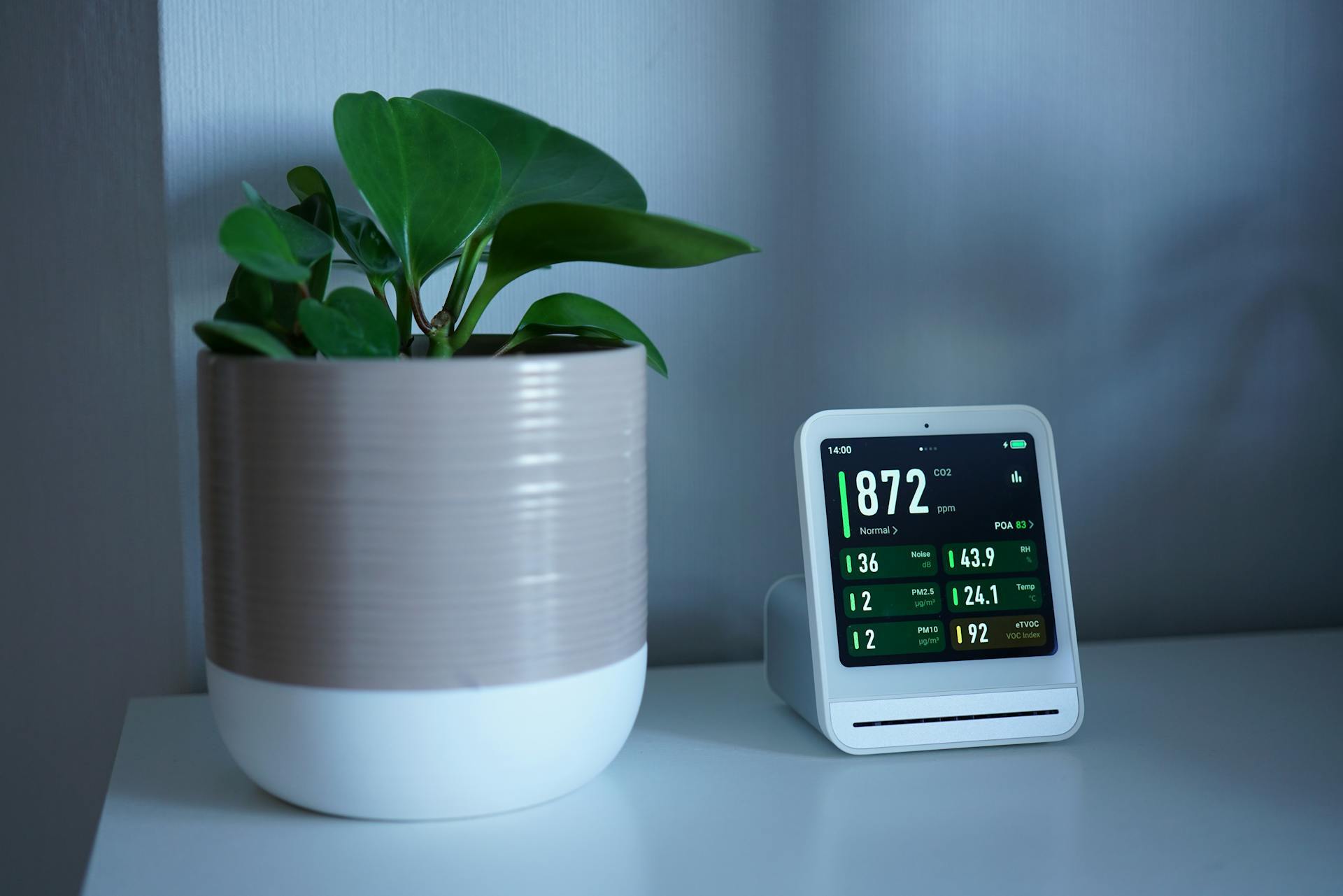In the older days, separate facility control systems suffered from limited visibility. Teams had to monitor and adjust everything manually from separate interfaces/software and on-site terminals (or even directly on the equipment itself).
What Is a Smart Building System & Why It Matters Now
Why Smarter Buildings Need Smarter IAQ Monitoring
Smarter buildings count on real-time data to operate efficiently. No matter how intelligent the system claims to be, it’s only as good as the information it receives from a network of sophisticated sensors. Insights from data collectors like indoor air quality (IAQ) spread throughout an HVAC system can help operators reduce energy waste and maintain occupant comfort.
What IAQ Sensors Are Telling You & How That Helps In Mixed-Use Spaces
Managing Indoor Air Quality with a Smart Building System
Building facility managers are used to the grind. It takes a lot to keep healthy air flowing in your building: constant site checks, manual adjustments, bulky standalone systems, and more.
The Role of Smart Building Automation in Improving IAQ
It’s easy to pass off indoor air quality as comfort issue — and it certainly is when Americans spend 90% of their time indoors — but it’s also a real health and productivity issue. For facilities like schools, hospitals, and office buildings, it has to stay top-of-mind that concentrations of many air pollutants are 2-5 times higher than they are outdoors (per that same EPA link above).
How to Deploy IAQ Monitoring For Energy Smart Buildings
An energy smart building depends on a combination of efficient HVAC equipment and nuanced real-time data to drive and control it. Building owners and engineers count on insights from indoor air quality (IAQ) monitoring sensors to make informed decisions that will reduce energy waste and maintain a comfortable environment. When combined with automated controls on a centralized, cloud-based platform, that data becomes actionable in real time.
Smart Building IoT Devices That Boost Air Quality Insight
Smart building IoT technologies have radically altered the way today’s facility managers approach HVAC and air quality management. Rather than planning around presumed conditions and weather reports, or relying on outdated mechanical schedules, today’s advanced buildings are outfitted with internet-connected sensors and controls. This network of sophisticated IoT sensors makes it possible to automate setpoints with real-time insights. The constant feed of precise data on various building systems drives more energy-efficient decisions while boosting air quality and comfort.
Why Smart Building Sensors Are Key to Comfort and Compliance
Over the last few years, smart building sensors have become foundational to both occupant comfort and regulatory compliance. The worldwide smart building market is currently forecasted to exceed $50 billion by 2028 (with a CAGR of over 26%). That’s momentum. But why the surge?
How Smart Building Software Simplifies IAQ Monitoring
Did you know that Americans spend up to 90% of their time indoors? This preponderance of time in the home and (for many) indoors at work gives your indoor air quality monitoring system the chance to make a huge impact.
The Next Level of Electrical Metering: Remote Trend Tracking
Most commercial building operators already know what they’re spending on energy. However, few know exactly when and where that energy is being wasted.
















